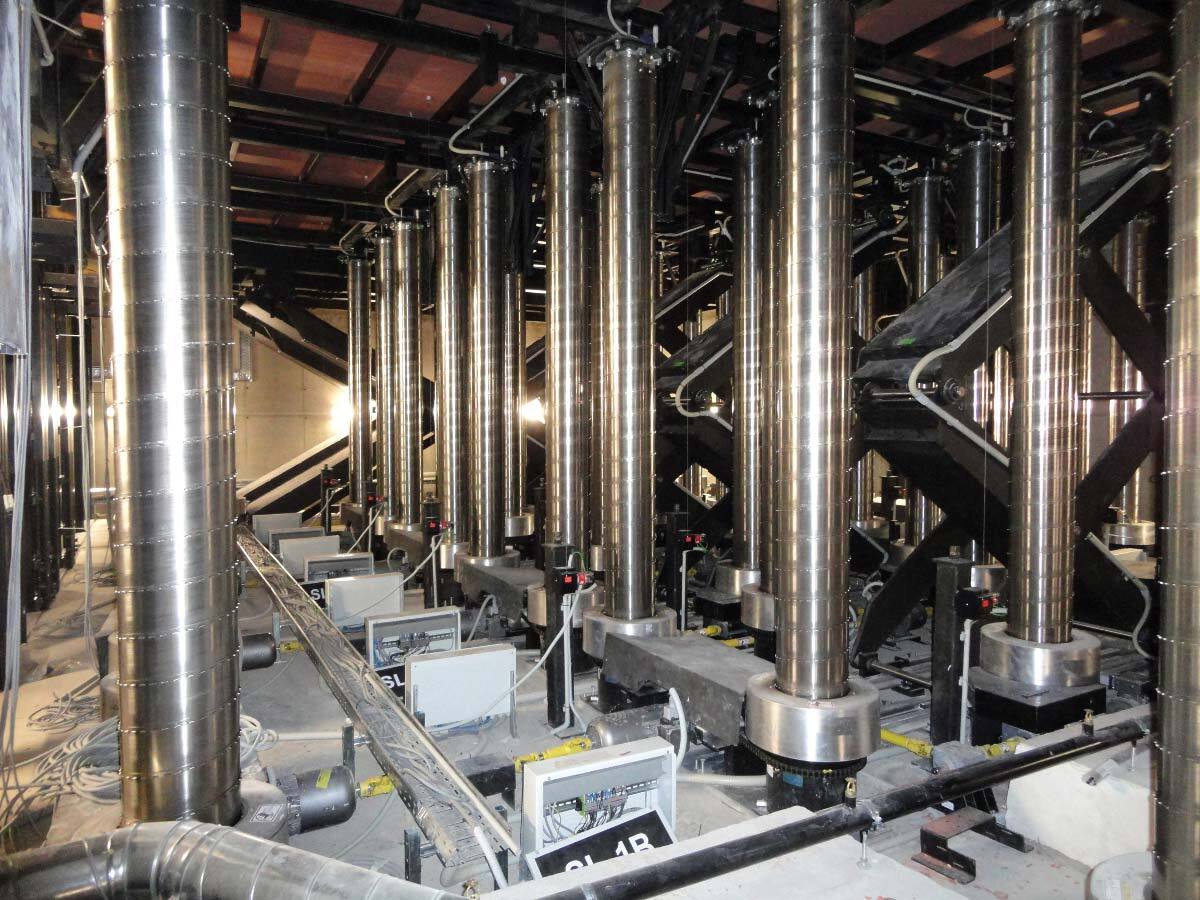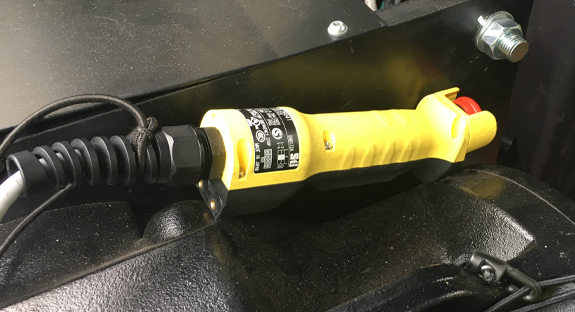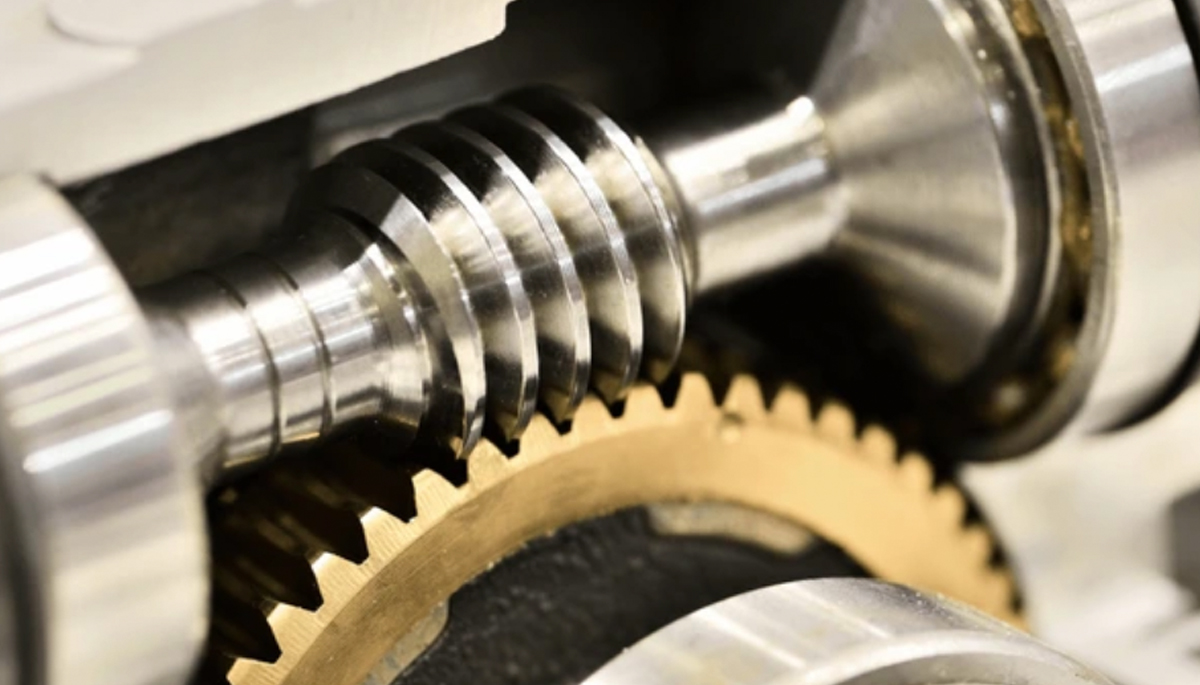Introduction
The European stage machinery safety standard EN 17206, Machinery for stages and other production areas – Safety requirements and inspections has become the reference technical document in many parts of the world since its publication in 2020.
This European standard is the first to address safety on machinery intended to move performers during artistic performances, filling a gap that has been left unattended for decades.
As a result, theatres, arenas, and other venues are gradually assessing their stage machinery and control systems in order to obtain formal compliance with the engineering and safety-related requirements of this authoritative document.
How the EN 17206 Compliance Process Works
Every theatre is usually fitted with all sorts of stage machinery: fly bars, stage elevators, point hoists, wagons, etc. Often these machines are manufactured or supplied by a multiple vendors. They are a mix of stage machinery and control systems integrated on location to create what EN 17206 calls a “machinery installation”.
The preliminary analysis starts with the acquisition of the machinery risk assessment, which is the backbone and key reference document for equipment design. It guides all the engineering calculations, tests, and protective measures necessary to have an intrinsically safe machinery installation.
The engineering part of the technical file is composed by the structural and mechanical calculations, the electrical safety reports, and the crucial functional safety assessment of the control systems’ safety functions, alongside with drawings, schematics, and test reports. Once such documentation is either obtained or produced, the output is checked against the risk reduction measures present in the risk assessment.
This is the first part of the compliance process.
At this point, the process moves towards the formal compliance with other requirements, such as instructions, guidelines, information, marking, declarations, and required education programs for machinery users.

Example of Upper Stage Machinery
Approvals or Validations
Once the preliminary analysis is completed, the physical state of the art of the machinery installation is assessed. During this phase of the compliance process – to validate the intentions against the machinery manufactured and installed – the theoretical output of the technical file is checked against what is found on site.
The machinery installation’s intended use, the possible interferences between stage machinery, the ergonomic aspects of the machinery’s use and interaction with it, the recurrent scenic movements, and some specific aspects of health and safety at work are analysed to provide the validation of the system.
In fact, at this stage, each machinery is not considered as a unique stage machinery, but as part of a possible assembly of machinery, normally controlled by a common control system.
Often additional protective measures as per EN 12100 are added to achieve an assembly of machinery safety condition, and the reliability of the existing safety and protective measures are assessed.
If the measures are not sufficiently solid, remedies are recommended and often implemented in synergy with the client.
The last part of the compliance assessment is the test and inspection procedure.
The overall machinery installation, each individual machinery, and the assembly of machinery as such, is inspected according to the manufacturing instructions and based on a checklist of visual and functional inspections that each competent EN 17206 expert has drafted over the years based on the standard requirements.
Proof load tests, stability and rigidity tests, functional and safety-related tests are carried out, alongside with the assessment of the emergency stop architecture, normally based on a specific risk assessment that has been drafted by the client.
When all tests are passed and other complementary documentation is present and checked, such as structural surveys, evacuation protocols, and rescue plans, the EN 17206 approval or validation is issued.
Existing Machinery Installations
When an EN 17206 compliance assessment is produced for existing machinery installations the process rationale described above does not change significantly. However, additional aspects need to be considered, for example substantial modifications that may have occurred over the years, replacement of parts, or addition, removal or substitution of machinery that may have modified the initial machinery installation risk assessment.
Usually, an EN 17206 gap analysis is carried out first. Then the existing preliminary documentation is checked. This information may refers to withdrawn standards or no longer applicable technical specifications. At last, the technical and safety-related requirements are evaluated and compared.
Ultimately, additional protective measures are identified, and steps to bring the machinery installation to a compliance status are put in place.
In absence of existing documentation, a general revision of the machinery installation is mandatory, this translates to the validation, a thorough inspection and analysis of the various elements of the stage machinery and control system.

Example of Lower Stage Machinery
The Benefits of EN 17206 Validation for Theatres
Although standards are voluntary documents, ignoring existing standards can have legal implications. In general, ignoring existing standards can be seen as a breach of the duty of care. This is because existing standards are often created to protect people from harm. By ignoring these standards, one is essentially disregarding the risk of harm and putting others at risk.
More and more theatres, venues, and arenas all over the world – not only in Europe – are concerned that their existing safety-related approach – in terms of stage machinery and control systems – is not representative to the legislator-employer expectations in terms of health and safety.
As a result, if an employer ignores existing standards and causes harm to a person, they may be held liable for damages. In addition to civil liability, by ignoring existing standards one could also face criminal charges. For example, when ignoring safety standards in the workplace, an employee or public gets injured as a result, they could be charged with a crime.
The legal implications of ignoring existing standards can be serious. If one is responsible for the safety of others, it is of utmost important to take all necessary steps to avoid harm.
This includes following existing standards and taking steps to identify and mitigate risks.
A validation or approval to EN 17206 represents for theatres the best employer proactive approach to care about their employees, customers, and audience.
And a theatre that takes care of its people even before staging a show, realises the deepest purpose that art sets itself: to create culture.





